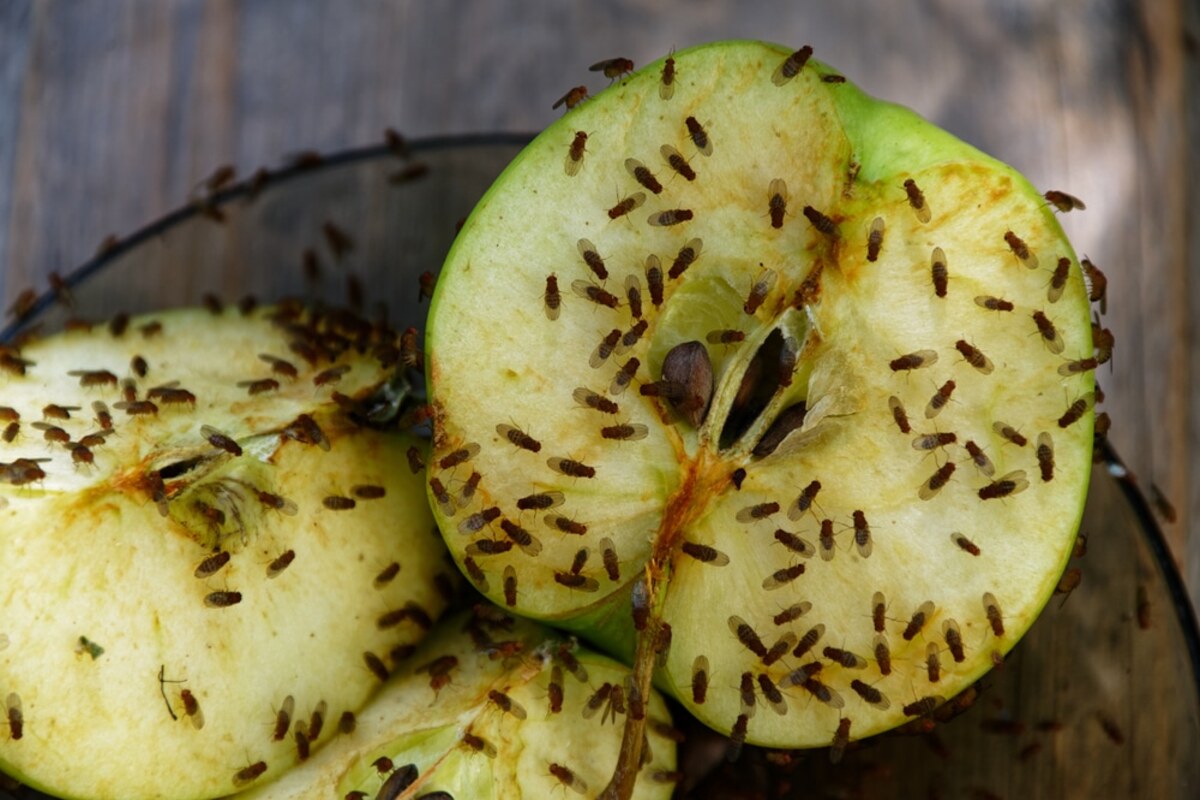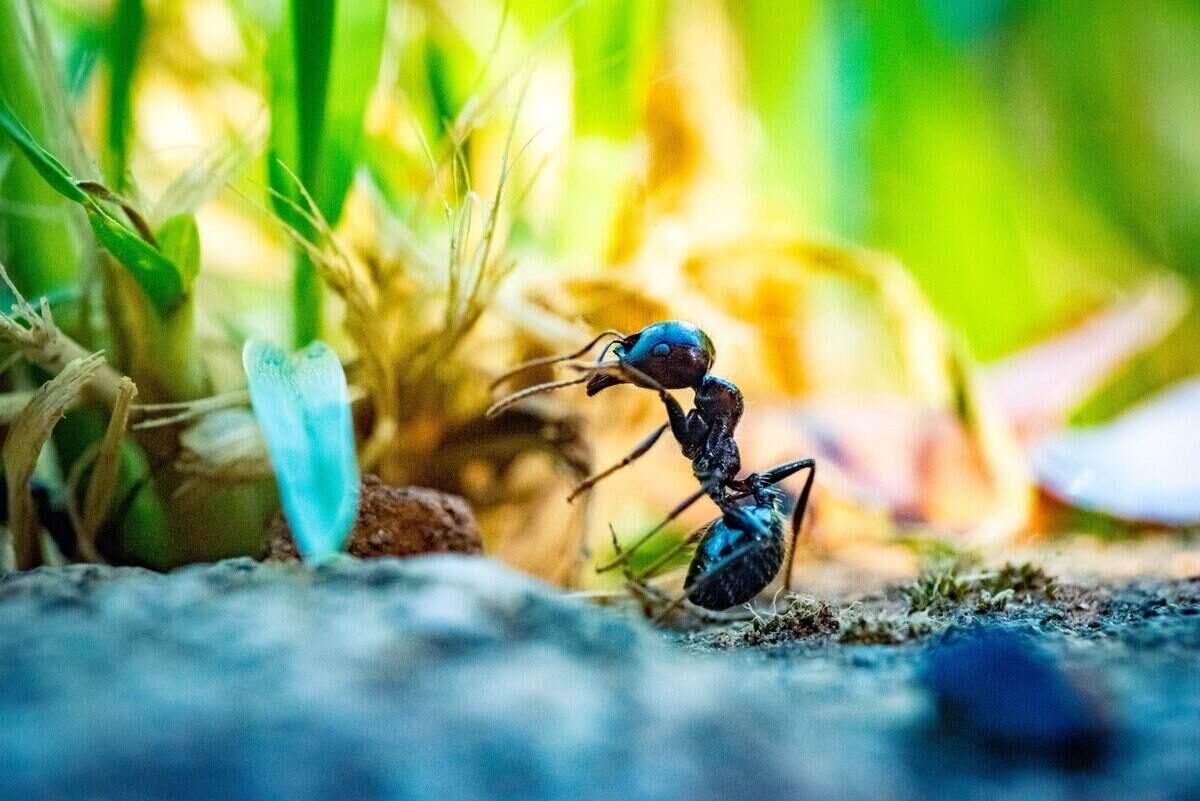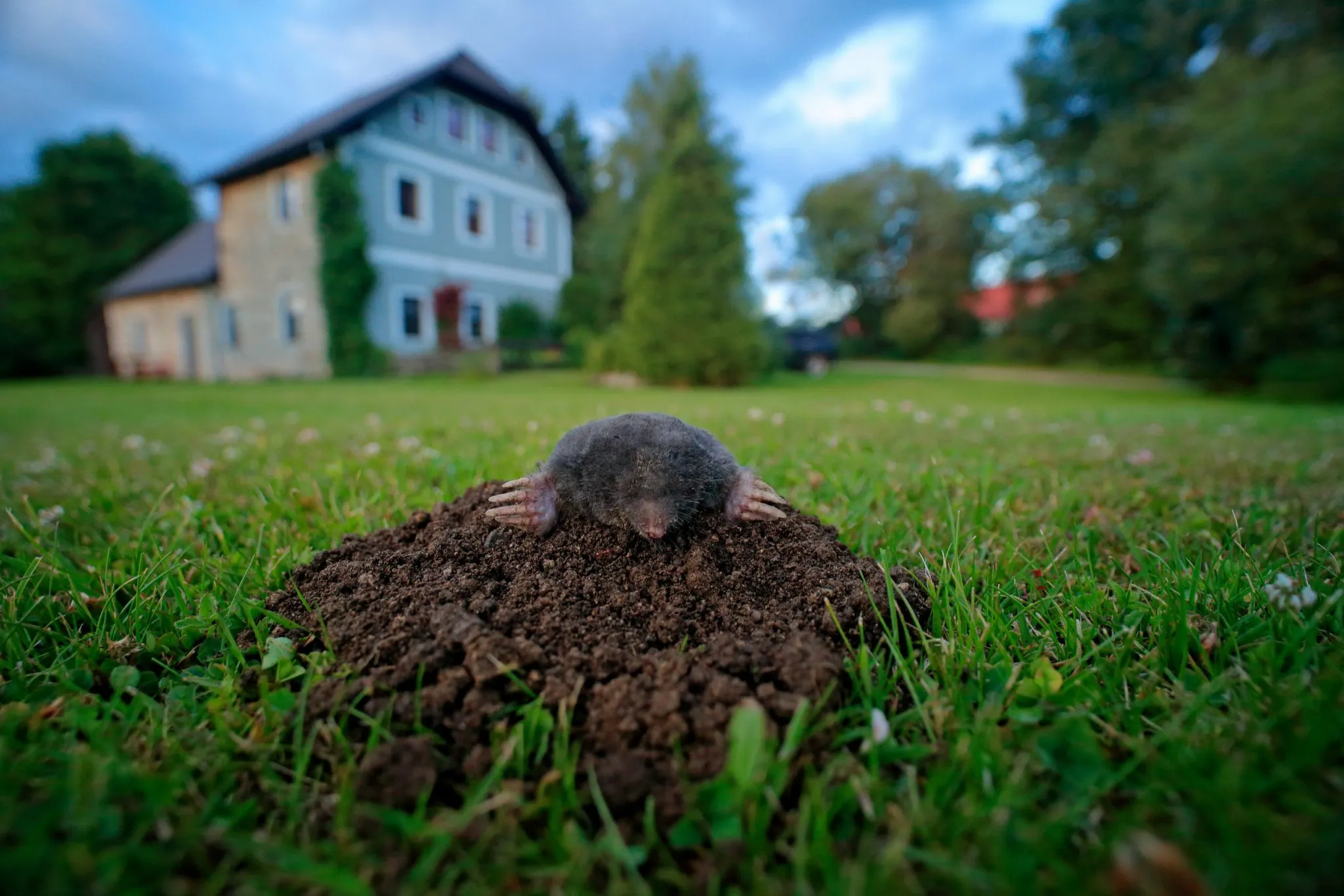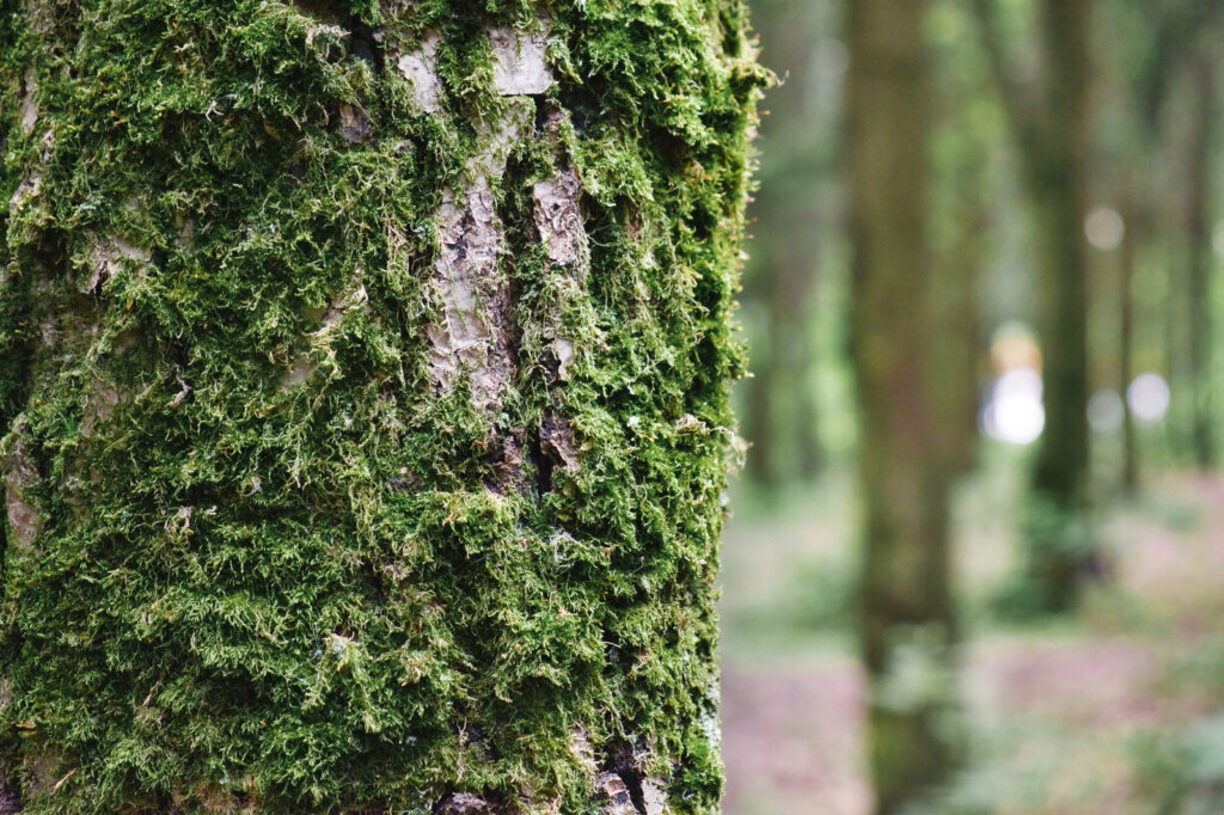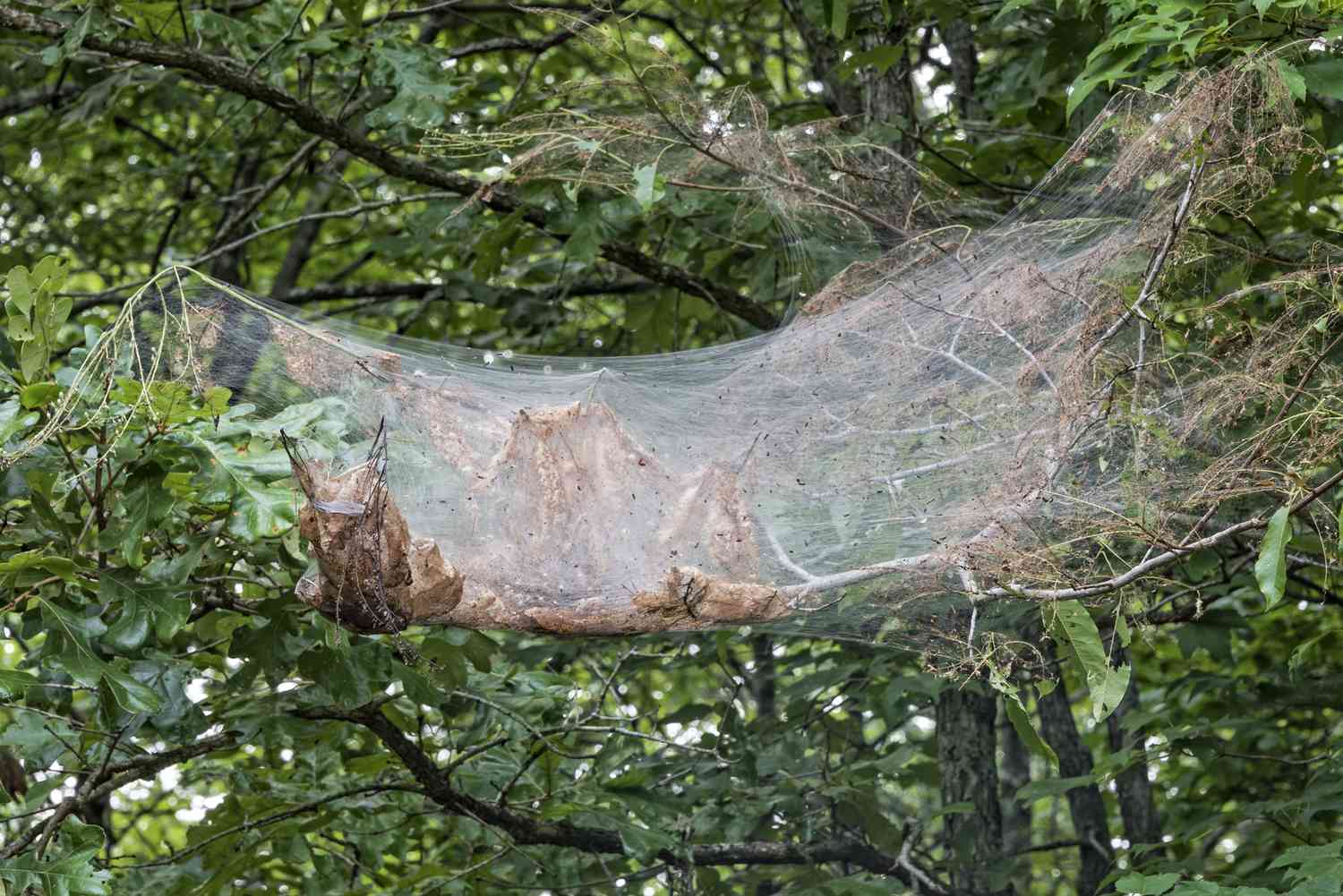Home>Gardening News and Trends>Latest News>How To Get Rid Of Pests Without Pesticides
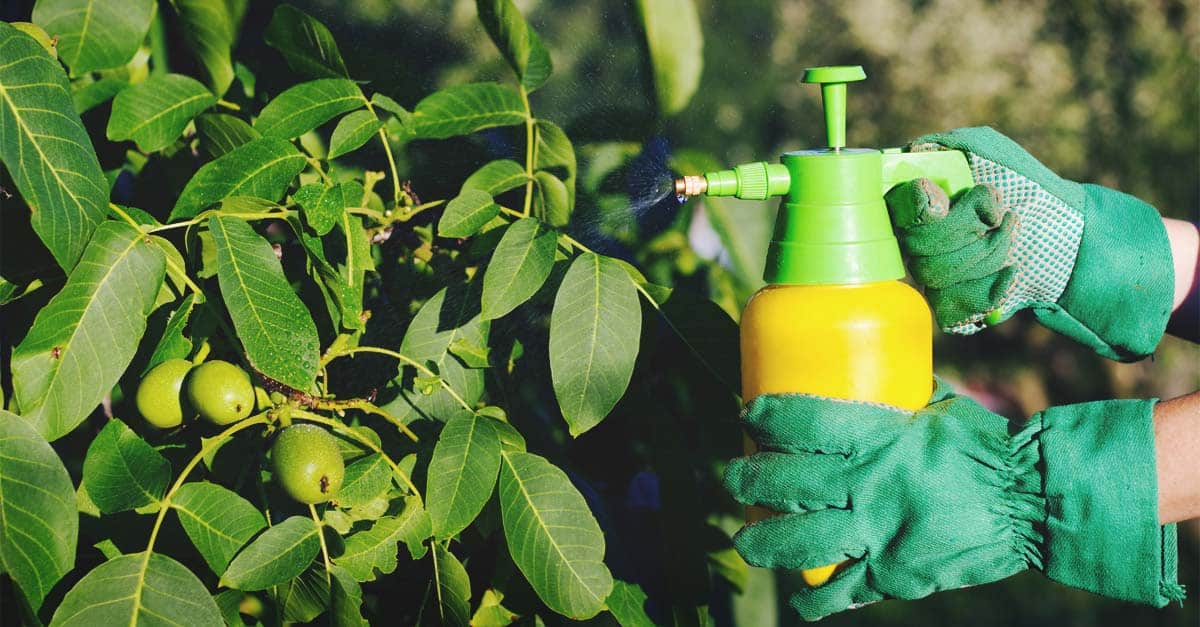

Latest News
How To Get Rid Of Pests Without Pesticides
Modified: January 29, 2024
Discover the latest news and effective methods on how to get rid of pests without the use of pesticides. Protect your home from unwanted invaders naturally.
(Many of the links in this article redirect to a specific reviewed product. Your purchase of these products through affiliate links helps to generate commission for Chicagolandgardening.com, at no extra cost. Learn more)
Table of Contents
- Introduction
- Understanding the Importance of Pesticide-Free Pest Control
- Identifying Common Household Pests
- Natural Methods to Repel Ants
- Nonchemical Approaches to Eliminate Cockroaches
- Preventing and Managing Mosquito Infestations without Pesticides
- Controlling Fleas and Ticks Naturally
- Eco-Friendly Solutions for Dealing with Mice and Rats
- Useful Plants for Deterring Garden Pests
- Maintaining a Clean and Pest-Free Home
- Conclusion
Introduction
Pests are unwelcome guests that can invade our homes and gardens, causing frustration, damage, and potential health hazards. While traditional pest control methods often rely on pesticides, there is a growing concern about the negative impact they can have on the environment and our well-being. Fortunately, there are effective alternatives that allow us to get rid of pests without resorting to harmful chemicals.
In this article, we will explore the importance of pesticide-free pest control and provide practical tips on how to eliminate common household pests using natural and eco-friendly methods. Whether you’re dealing with ants, cockroaches, mosquitoes, fleas, rodents, or garden pests, there are proven techniques that can help you achieve a pest-free environment.
By implementing these methods, you not only protect your health and the environment, but you also promote a more sustainable way of dealing with pest infestations. So let’s dive in and discover how we can effectively combat pests without relying on pesticides.
Understanding the Importance of Pesticide-Free Pest Control
Pesticides have long been used as a go-to solution for controlling pests. However, they come with a range of drawbacks and risks to consider. Prolonged exposure to pesticides can have adverse effects on human health and the environment. They can contaminate water sources, harm beneficial insects, and disrupt the delicate balance of ecosystems.
Furthermore, the repeated use of pesticides can lead to the development of pesticide-resistant pests, rendering these chemicals ineffective over time. This means that pests become harder to eradicate and require stronger and more toxic pesticides, perpetuating a harmful cycle.
By opting for pesticide-free pest control methods, we can minimize these risks and contribute to a safer and healthier environment for ourselves and future generations. Embracing natural alternatives not only protects our health but also promotes sustainability and biodiversity.
Another essential factor to consider is the impact of pesticides on non-target organisms. Beneficial insects, such as bees and butterflies, play a crucial role in pollination and maintaining a healthy ecosystem. Pesticides can be harmful to these beneficial insects, leading to their decline and disrupting the delicate balance of nature.
Moreover, pesticide residues can accumulate on crops, posing health risks to consumers. By choosing pesticide-free pest control methods, we support organic and sustainable farming practices that prioritize the health and well-being of both humans and the environment.
Overall, the importance of pesticide-free pest control cannot be overstated. It allows us to protect our health, preserve the environment, and maintain a harmonious coexistence with other organisms. In the following sections, we will explore various natural methods to control specific pests effectively without relying on harmful pesticides.
Identifying Common Household Pests
Before we can effectively combat pests in our homes, it’s crucial to first identify the specific pests we’re dealing with. Each type of pest may require different control methods, so accurate identification is key. Here are some common household pests and how to recognize them:
- Ants: Ants are social insects that can invade our homes in search of food and water. They leave trails of pheromones, making it easier to track their movement. Look for tiny trails of ants leading to food sources or nesting areas.
- Cockroaches: Cockroaches are nocturnal insects that thrive in dark, humid environments. They can rapidly infest homes and spread diseases. Look for droppings, shed exoskeletons, or an unpleasant musty odor as signs of their presence.
- Mosquitoes: Mosquitoes are small, flying insects that are notorious for their itchy bites. They are usually found near standing water sources such as ponds, pools, or even flower pots filled with water. Female mosquitoes require blood meals to lay eggs.
- Fleas: Fleas are tiny, wingless insects that infest our homes through our pets or wildlife. They survive by feeding on the blood of their hosts and can cause discomfort and skin irritations. Look for bites on yourself or your pets, or for flea dirt (dark specks resembling ground pepper) on bedding or furniture.
- Ticks: Ticks are small arachnids that latch onto humans or animals to feed on their blood. They are commonly found in wooded or grassy areas and can transmit diseases. Check for ticks on your body or your pets after spending time outdoors.
- Mice and Rats: Mice and rats are common rodents that can cause significant damage to homes and spread diseases. Look for gnaw marks, droppings, or scratching noises as signs of their presence.
- Garden Pests: Garden pests include insects, rodents, and other creatures that feed on our plants and vegetables. Common examples include aphids, snails, slugs, and squirrels.
Proper identification of these pests will allow us to choose the most appropriate and targeted methods to control and prevent their infestations. In the following sections, we will explore natural and eco-friendly ways to repel and eliminate these pests without relying on pesticides.
Natural Methods to Repel Ants
Ants are social insects that often invade our homes in search of food and water. Fortunately, there are several natural methods you can use to repel ants without resorting to pesticides. Here are some effective strategies:
- Keep your home clean: Ants are attracted to crumbs and spills, so keeping your home clean and free of food debris is essential. Regularly sweep, mop, and vacuum to eliminate potential food sources.
- Seal entry points: Ants can find their way into your home through tiny cracks and gaps. Seal any entry points, such as gaps around windows and doors, with caulk or weatherstripping to prevent their entry.
- Create barriers: Ants can be deterred by certain substances. Create barriers using items like cinnamon, baby powder, or citrus peels around entry points to repel ants.
- Use vinegar: Ants dislike the strong scent of vinegar. Mix equal parts vinegar and water in a spray bottle and spray it along ant trails, entry points, and areas where they are commonly found.
- Use coffee grounds: Sprinkle used coffee grounds around ant-infested areas or potential entry points. The strong scent of coffee can deter ants from entering your home.
- Plant deterrent herbs: Certain herbs, such as mint, lavender, and basil, have natural ant-repellent properties. Plant these herbs around your home’s perimeter or near windows and doors to discourage ants.
- Use diatomaceous earth: Diatomaceous earth is a natural substance derived from fossilized algae that is effective against ants. Sprinkle it along ant trails, entry points, and areas of activity. The sharp particles will puncture their exoskeleton, leading to dehydration and eventual death.
- Eliminate ant colonies: If you discover an ant colony in your yard, try using natural methods to eliminate it. Pouring boiling water directly into the nest or using a mixture of dish soap and water can effectively destroy the colony.
Remember, consistent and proactive measures are key when dealing with ants. Regularly monitor and address any signs of ant activity to prevent infestations. By using these natural methods, you can effectively repel ants and keep them out of your home without the need for harmful pesticides.
Nonchemical Approaches to Eliminate Cockroaches
Cockroaches are nocturnal pests that can infest homes and pose a threat to our health and well-being. While the use of chemical pesticides is a common method for eliminating cockroaches, there are nonchemical approaches that can be just as effective, without the potential risks. Here are some nonchemical methods to eliminate cockroaches:
- Maintain cleanliness: Cockroaches are attracted to food debris and dirty environments. Keeping your home clean and free of crumbs, spills, and garbage can help deter and prevent cockroaches from infesting your space.
- Seal entry points: Cockroaches can enter your home through small cracks and crevices. Seal any entry points with caulk or weatherstripping to prevent their entry and minimize the risk of infestation.
- Remove clutter: Cockroaches thrive in cluttered environments, as it provides them with hiding spots. Declutter your home, especially in dark and moist areas such as basements and attics, to eliminate potential hiding places for cockroaches.
- Fix moisture issues: Cockroaches are attracted to moisture. Fix any leaks in pipes, faucets, or other plumbing fixtures to reduce humidity levels and eliminate water sources that attract cockroaches.
- Use sticky traps: Sticky traps, also known as cockroach traps, are an effective tool for monitoring and trapping cockroaches. Place these traps in areas where cockroaches are commonly found, such as near baseboards, under sinks, and inside cabinets.
- Make homemade baits: You can create your own cockroach bait using a mixture of boric acid, flour, and sugar. The sugar attracts the cockroaches, while the boric acid acts as a poison. Place small amounts of the bait in areas where cockroaches are active, but out of reach of children and pets.
- Use natural cockroach repellents: Cockroaches dislike the scent of certain natural substances. Essential oils like peppermint, eucalyptus, and tea tree oil can be diluted with water and sprayed around areas where cockroaches are present to deter them.
- Professional pest control: If you have a severe cockroach infestation that is difficult to manage with nonchemical methods, consider seeking help from a professional pest control company that offers eco-friendly approaches.
By implementing these nonchemical approaches, you can effectively eliminate cockroaches from your home without relying on harmful chemicals. It’s essential to be consistent and persistent with these methods to ensure that you minimize the risk of cockroach infestations and create a healthier living environment.
Preventing and Managing Mosquito Infestations without Pesticides
Mosquitoes are not only annoying, but they can also pose serious health risks as carriers of diseases like dengue fever, Zika virus, and malaria. While traditional mosquito control often involves the use of chemical pesticides, there are effective ways to prevent and manage mosquito infestations without relying on harmful chemicals. Here are some nonchemical approaches:
- Eliminate standing water: Mosquitoes need standing water to lay their eggs. Regularly inspect your property and remove any stagnant water sources, such as flower pots, bird baths, or clogged gutters. Empty and clean these containers regularly to disrupt mosquito breeding.
- Install screens and seal openings: Keep mosquitoes out of your home by installing screens on windows and doors. Repair any damaged or loose screens and seal gaps and cracks that may serve as entry points for mosquitoes.
- Use mosquito netting: When spending time outdoors, especially during peak mosquito activity times, use mosquito netting to create a protective barrier. This is particularly useful for camping or sleeping arrangements where mosquitoes may be present.
- Wear protective clothing: When going outside, wear long-sleeved shirts, long pants, and socks to reduce exposed skin and minimize mosquito bites. Light-colored clothing can also help deter mosquitoes as they are attracted to dark colors.
- Use mosquito repellents: Apply mosquito repellents containing CDC-recommended ingredients, such as DEET, picaridin, or oil of lemon eucalyptus, to exposed skin. Follow label instructions and reapply as necessary.
- Encourage natural predators: Introduce natural mosquito predators to your outdoor space, such as fish in water features or bats that feed on mosquitoes. These predators can help control mosquito populations naturally.
- Utilize mosquito traps: Mosquito traps can effectively reduce mosquito populations by attracting and capturing them. There are various types of traps available, including carbon dioxide-based traps and UV light traps.
- Coordinate community efforts: Work with your neighbors and community to implement mosquito control measures collectively. This can involve promoting awareness, eliminating breeding sites, and implementing mosquito control programs in shared spaces.
By employing these nonchemical methods, you can effectively prevent and manage mosquito infestations without resorting to pesticides. Implementing multiple strategies in combination can provide the best results. It’s essential to be vigilant and proactive in your efforts to create a mosquito-free environment and reduce the risk of mosquito-borne diseases.
Controlling Fleas and Ticks Naturally
Fleas and ticks are common parasites that can infest our homes and pets, causing discomfort and potential health issues. While conventional methods often involve the use of chemical-based pesticides, there are natural and effective ways to control fleas and ticks without resorting to harmful chemicals. Here are some strategies for natural flea and tick control:
- Maintain cleanliness: Regularly vacuum your home, paying close attention to areas where your pets rest. Dispose of the vacuum bag or empty the canister to prevent fleas and ticks from reinfesting your home.
- Wash bedding and pet accessories: Wash your pet’s bedding, blankets, and toys regularly in hot water to eliminate any flea eggs or larvae. This helps break the flea life cycle and reduces the population.
- Groom your pets: Regular grooming can help detect and remove fleas and ticks from your pets’ fur. Use a flea comb or fine-toothed comb to comb through their fur and remove any parasites.
- Use natural repellents: There are natural ingredients and essential oils that can repel fleas and ticks. Dilute essential oils, such as lavender, cedarwood, or eucalyptus, in water and apply them to your pet’s collar or bedding.
- Create a flea and tick-repellent spray: Mix equal parts apple cider vinegar and water in a spray bottle and spray it on your pet’s fur, avoiding their eyes and mouth. This can help repel fleas and ticks due to its acidic nature.
- Try herbal flea and tick dips: Herbal flea and tick dips made with natural ingredients like neem oil, rosemary, or lemon have repelling properties. Dilute these ingredients according to instructions and use them as a rinse for your pet after bathing.
- Utilize flea and tick collars: Look for natural flea and tick collars that contain ingredients like citronella or cedarwood, which repel parasites without the use of harmful chemicals.
- Keep your yard tidy: Regularly mow your lawn and trim grassy areas to reduce tick habitat. Remove any debris or clutter where fleas and ticks may hide.
- Consider nematodes: Beneficial nematodes are microscopic organisms that can be applied to your yard to control fleas and ticks naturally. These nematodes feed on flea larvae and can help reduce the population.
- Consult with a veterinarian: If you’re unsure about natural flea and tick control methods, consult with a veterinarian who can provide advice specific to your pet’s needs and recommend natural products.
By implementing these natural methods for flea and tick control, you can effectively prevent infestations and protect your pets without resorting to harmful pesticides. It’s important to be consistent and proactive in your efforts to maintain a flea and tick-free environment for the health and well-being of your pets and family.
Eco-Friendly Solutions for Dealing with Mice and Rats
Mice and rats are common household pests that can cause damage to property and pose health risks. Although traditional pest control methods often involve the use of chemical-based rodenticides, there are eco-friendly solutions for dealing with mice and rats. Here are some effective strategies:
- Seal entry points: Mice and rats can squeeze through small openings. Inspect your home for any gaps or cracks and seal them with steel wool, caulk, or sturdy materials to prevent their entry.
- Maintain cleanliness: Keep your home clean and free of food sources. Store food in sealed containers, promptly clean up spills, and regularly remove garbage to minimize attractants for mice and rats.
- Eliminate nesting sites: Mice and rats seek shelter in cluttered areas. Reduce potential nesting sites by organizing and decluttering your home, especially in attics, basements, and storage areas.
- Use humane traps: Consider using catch-and-release traps to capture mice and rats. Once captured, release them in a suitable area away from your home.
- Employ natural repellents: Certain substances can repel mice and rats. Peppermint oil, black pepper, and ammonia are known to deter rodents. Soak cotton balls in these repellents and place them in areas frequented by mice and rats.
- Use ultrasonic devices: Ultrasonic devices emit high-frequency sound waves that are disruptive to rodents. Place these devices in areas where mice and rats are active to deter them.
- Utilize predator odors: The scent of natural predators, such as cat or dog hair, can deter mice and rats. Place pet hair or urine-soaked cotton balls in areas where rodent activity is observed.
- Seaweed mulch: Rats dislike the smell of seaweed mulch. Use it in your garden as a natural deterrent to ward off rats.
- Solve moisture issues: Fix any plumbing leaks or moisture problems in your home. Eliminating excess moisture discourages mice and rats as they are attracted to water sources.
- Professional pest control: If the infestation persists or becomes unmanageable, consider consulting with a professional pest control service that specializes in eco-friendly methods for rodent control.
By implementing these eco-friendly solutions, you can address mouse and rat infestations without relying on harmful chemicals or causing unnecessary harm to these creatures. It’s important to combine different strategies and be persistent in your efforts to effectively manage and prevent rodent problems in a safe and environmentally friendly way.
Useful Plants for Deterring Garden Pests
Garden pests can wreak havoc on our plants and undermine our gardening efforts. While chemical pesticides are commonly used to combat these pests, there are natural and eco-friendly alternatives that can help deter them. By incorporating certain plants into your garden, you can create a natural barrier and reduce the need for chemical interventions. Here are some useful plants for deterring garden pests:
- Marigolds: Marigolds contain a compound called limonene, which repels a wide range of pests, including aphids, mosquitoes, and nematodes. Plant marigolds throughout your garden to deter these pests.
- Lavender: Lavender has a powerful scent that repels fleas, moths, and mosquitoes. Plant lavender near entryways and garden borders to deter these pests.
- Basil: Basil not only adds flavor to your meals but also repels pests like flies, mosquitoes, and aphids. Plant basil near susceptible plants or in container gardens to provide natural protection.
- Mint: Mint is known for its strong aroma, which repels pests like ants, aphids, and cabbage moths. Plant mint strategically around your garden or in pots to ward off these pests.
- Nasturtium: Nasturtium produces a chemical called benzyl isothiocyanate, which repels aphids, whiteflies, and squash bugs. Plant nasturtiums near susceptible vegetables to deter these pests.
- Chrysanthemums: Chrysanthemums contain a natural insecticide called pyrethrum, which repels a wide range of garden pests, including aphids, mites, and whiteflies. Plant chrysanthemums as a border or intercrop among vegetables to deter pests.
- Chives: Chives emit a strong odor that repels pests like aphids, carrot flies, and Japanese beetles. Plant chives near susceptible plants or use them as a companion plant in vegetable gardens.
- Rosemary: Rosemary has a strong aroma that repels pests like mosquitoes, cabbage moths, and carrot flies. Plant rosemary near outdoor seating areas or use it as a border plant to deter pests.
- Garlic: Garlic is a natural repellent for pests like aphids, slugs, and spider mites. Plant garlic near roses, tomatoes, or other susceptible plants to discourage pests.
- Onions: Onions emit a pungent smell that repels pests like aphids, thrips, and carrot flies. Plant onions among your vegetables or as a border plant to deter these pests.
By incorporating these useful plants into your garden, you can naturally deter pests and reduce the need for chemical pesticides. Remember to plan your garden layout strategically, placing these plants near vulnerable or high-risk areas. By promoting a balanced ecosystem and utilizing the natural pest-repellent properties of these plants, you can maintain a healthy and thriving garden while minimizing the impact on the environment.
Maintaining a Clean and Pest-Free Home
Maintaining a clean and pest-free home is essential for the well-being of you and your family. By implementing a few simple habits and practices, you can prevent pests from entering your home and minimize the need for harsh chemicals. Here are some tips for maintaining a clean and pest-free home:
- Keep your kitchen clean: Wipe down countertops, tables, and other surfaces to eliminate food crumbs and spills that can attract pests like ants and cockroaches. Sweep and mop the floors regularly.
- Store food properly: Keep food in sealed containers to prevent pests from accessing it. This includes dry goods, pet food, and produce. Pay attention to expiration dates and regularly check for signs of pests.
- Empty the trash regularly: Dispose of garbage in sealed bags and take it out of the house regularly. Make sure outdoor trash bins are tightly closed.
- Fix leaky faucets and pipes: Moisture attracts pests like mosquitoes and cockroaches. Repair any leaks promptly and dry damp areas to discourage pests from breeding or seeking shelter.
- Seal cracks and gaps: Inspect your home for any cracks or gaps in windows, doors, and walls. Seal them with caulk or weatherstripping to prevent pests from entering.
- Remove clutter: Piles of clutter provide hiding places for pests like mice and rats. Declutter your home regularly, removing unnecessary items and organizing storage areas.
- Regularly clean and maintain your yard: Pests can originate from outside areas. Keep your yard tidy by trimming bushes and trees away from your house, removing standing water, and regularly mowing the lawn.
- Inspect and screen vents and openings: Check vents, crawl spaces, and openings around the house for potential entry points of pests. Install screens or mesh to prevent pests from getting inside.
- Use natural repellents: Incorporate natural pest deterrents inside your home, such as cedar chips, lavender sachets, or essential oils like peppermint or citronella, to repel pests.
- Routine maintenance and inspections: Regularly inspect your home for signs of pests and take prompt action if any are found. Consider hiring professional pest control services for regular inspections and treatments using eco-friendly methods.
By following these practices, you can maintain a clean and pest-free home, reducing the need for harsh chemical pesticides. A clean and organized living space not only makes your home more pleasant but also helps prevent pests from finding food, water, and shelter. By adopting these habits and staying vigilant, you can create a healthier and more comfortable living environment for you and your family.
Conclusion
Taking a pesticide-free approach to pest control is not only beneficial for our health and the environment, but it also provides more sustainable and effective long-term solutions. By understanding the importance of pesticide-free pest control and implementing natural methods, we can effectively combat pests without relying on harmful chemicals.
Identifying common household pests and targeting them with specific nonchemical approaches allows us to tailor our pest control efforts. Natural techniques such as sealing entry points, maintaining cleanliness, and using repellents made from plants or essential oils provide effective solutions for repelling ants, cockroaches, mosquitoes, fleas, ticks, mice, and rats.
In the garden, utilizing useful plants to deter garden pests can create a natural barrier and reduce the need for chemical pesticides. Incorporating plants like marigolds, lavender, basil, and mint can help repel pests and maintain a healthy garden ecosystem.
Maintaining a clean and pest-free home involves practicing good hygiene and taking preventive measures such as storing food properly, fixing leaks, sealing cracks, removing clutter, and performing regular inspections. By following these habits and incorporating natural repellents, we can minimize the risk of pest infestations and reduce our reliance on harmful chemicals.
In conclusion, embracing pesticide-free pest control methods not only allows us to protect our health, but also helps preserve the environment and promote sustainable practices. By being proactive and consistent in implementing these natural and eco-friendly approaches, we can create safe and pest-free spaces for ourselves, our families, and the ecosystems we inhabit.
